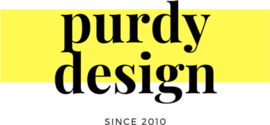Unlocking the Secrets to Horse Behavior Language for Successful Training
Horses, with their majestic presence and instinctual nature, communicate in a language all their own, shaped by millions of years of evolution.
Their behavior, far from arbitrary, holds keys to understanding their emotions, health, and needs.
Deciphering the subtle signals in a horse’s ears twitching, the arch of its neck, or the shuffle of its hooves can transform the relationship between human and horse, fostering a deeper bond and making training a harmonious dance rather than a battle of wills.
To truly excel in horse management and training, one must become fluent in the nuanced language of equine body language and behaviors.
Keep reading to unlock the secrets of horse behavior language for successful training.
How to Read Your Horse’s Body Language
Mastering the nuances of horse body language is a science that bridges the communication gap between humans and these majestic animals.
Recognizing whether a horse stands in relaxation or tension opens the door to understanding their immediate feelings and overall well-being.
Analyzing the head’s position and its movements can reveal a horse’s attention, curiosity, and reaction to stimuli, offering cues to their mood and potential behavior.
Interpreting the horse’s stance, from the distribution of weight across their hooves to the alignment of their ears, provides insight into their readiness for training or exercise.
By closely observing these signals, trainers and caregivers can use body language as a reliable predictor of a horse’s future actions, paving the way for more successful and harmonious human-horse interactions.
Identifying Relaxed vs Tense Postures
Observing a horse in their natural or barn environment, it’s evident when their posture indicates a state of relaxation. A relaxed horse often has a soft gaze, slightly droopy eyelids, and their head held at a comfortable, mid-level height, illustrating they feel safe and content in their surroundings. Their body might be loosely positioned, with ears casually flopping to the sides or gently moving to catch faint sounds, showing curiosity without alarm.
In contrast, a horse exhibiting tense posture sends a clear message of discomfort or distress. This might be illustrated through a stiffened body, with the head raised high or extended forward, eyes wide open scanning for potential threats, and nostrils flared as they prepare to react. Ears might be pinned back tightly against the head, a definitive sign of irritation or anger, signaling to others that they are not in a welcoming mood.
The Significance of Head Position and Movement
The position and movement of a horse’s head are powerful indicators of its attention and emotional state. A lowered head often signals contentment or submission, allowing for a smooth training session, whereas a horse lifting its head sharply might be expressing curiosity or alarm, necessitating a careful approach from the handler.
Movement, too, offers valuable clues; a horse tossing its head might be showing irritation or refusing to accept the bridle, suggesting a need for reassessment of the training method or gear. Conversely, a gentle bobbing motion can indicate relaxation and readiness to engage, guiding the trainer towards the most effective communication strategy.
Interpreting the Horse’s Stance
The way a horse distributes its weight can tell a seasoned observer a lot about its state of mind and health. A relaxed horse might stand with its weight evenly balanced on all four hooves, signifying a comfortable and tranquil state, or sometimes shift its weight from hoof to hoof in a slow, rhythmic pattern as a part of natural grazing behavior or while dozing off in the pasture.
On the other hand, a horse that constantly shifts its weight or refuses to put weight on a particular hoof could be indicating discomfort or even pain, possibly due to injury or lameness. Such observations require immediate attention, invoking the expertise of a veterinarian. This stance not only alerts caregivers to potential health issues but also emphasizes the importance of continuous learning and attentiveness in horse management.
Using Body Language to Predict Behavior
Reading a horse’s body language provides invaluable insight into predicting its future actions, essential for training and deepening the bond between human and horse. Recognizing subtle shifts in posture, from the flick of an ear to the swivel of the hip, allows trainers to anticipate a horse’s next move, whether it’s welcoming engagement or preparing for bucking in resistance. This understanding transforms unpredictable situations into opportunities for growth and learning, both for the horse and the trainer.
Interpreting signs of stress or boredom through body language, such as repetitive head tossing or constant shifting from hoof to hoof, equips trainers with the knowledge to adjust their methods, fostering a more positive and productive environment. The ability to discern these early signals of discomfort enables the prevention of escalated behaviors like aggression or anxiety, guiding towards exercises and interactions that promote relaxation and mutual respect. Such nuanced communication highlights the intricate dance between desire and discipline in the realm of horse training.
What His Ears Say
Deciphering the language of horse ears provides a window into the animal’s inner world, revealing their mood, intent, and reactions to their environment.
Understanding ear positions and their meanings plays a pivotal role in the dance of communication, bridging gaps between human expectation and horse reality.
The subtle flick, the forward focus, or the backward flare – each movement of the ears is a piece of the puzzle in understanding a horse’s emotional state.
Recognizing these cues, from the nuanced shifts indicating curiosity to the stark warning of ear pinning, empowers trainers and caregivers to respond more effectively.
It lays the foundation for a relationship built on mutual respect and keen insight, turning moments of misunderstanding into opportunities for connection and learning.
Understanding Ear Positions and Their Meanings
The ears of a horse act much like a radar, constantly scanning the environment and reflecting internal emotions. When a horse’s ears are pricked forward, it usually signifies alertness or interest in something happening ahead, showing that the horse is engaged and paying attention to its surroundings or the task at hand.
Conversely, when a horse pins its ears flat against its head, it’s an unequivocal sign of annoyance or displeasure, signaling that something or someone has invaded its comfort zone. This gesture is a crucial communication tool for handlers, indicating it might be time to reassess the situation and approach the horse with caution to avoid escalating tension.
The Connection Between Ear Movement and Mood
The dynamic movement of a horse’s ears is much more than a simple response to noise; it acts as a mirror reflecting the animal’s mood and feelings. A shift towards an upright and forward position can signal excitement or intense focus, a hint that the horse is intrigued by or positive about its current interaction or surroundings.
Conversely, a horse rotating its ears backward or laying them flat showcases a significant change in mood, often indicative of stress, fear, or suspicion. This ear movement is a critical signal for handlers, suggesting the urgency to modify their approach or environment in order to alleviate the horse’s discomfort and reassure its sense of security.
Reading the Signals of Ear Pinning
Ear pinning is a critical warning from a horse, akin to a red flag signaling imminent discomfort or potential aggression. This gesture, where the ears lay flat against the head, communicates the horse’s irritation or fear, demanding immediate attention from the handler to prevent negative outcomes.
A handler observing this behavior should assess the situation rapidly, identifying the stimulus triggering the reaction and acting to alleviate the horse’s anxiety. Recognizing and responding appropriately to ear pinning can avert escalation into more dangerous behaviors, safeguarding the well-being of both the horse and its human companions.
What His Head Carriage Says
Turning our attention to the horse’s head carriage, we delve into a critical aspect of their communication arsenal.
The way a horse holds and moves its head in various scenarios offers precise clues about their internal state, making it a pivotal focus for anyone aiming to decode horse behavior for effective training.
Interpreting head height across different situations paves the way to understanding a horse’s comfort and confidence levels.
Furthermore, observing the subtleties in head movements can shine a light on how attentive or engaged a horse is with their environment or task at hand.
Meanwhile, head shaking shouldn’t be overlooked, as it often serves as a clear indicator of discomfort or dissatisfaction.
Together, these insights form a comprehensive guide to navigating the complex language of horse head carriage, setting the stage for more nuanced and successful human-horse interactions.
Interpreting Head Height in Different Situations
The elevation of a horse’s head serves as a dynamic gauge of its comfort, alertness, and overall mood. A high head carriage often points to a state of unease or curiosity, signaling a horse’s attempt to assess its surroundings or indicate discomfort with present circumstances.
Conversely, a lower head position usually reflects a relaxed or submissive state, portraying a sense of contentment and security in their environment. It’s a visual cue that trainers can interpret as a green light for proceeding with exercises, knowing the horse is in a cooperative frame of mind.
The Link Between Head Movements and Attentiveness
The subtle nods or turns of a horse’s head are more than just movements; they are a clear testament to where its focus lies, offering a glimpse into its state of mind. A horse that constantly checks its surroundings by turning its head might be signaling its alertness or possibly its discomfort, urging the handler to reassess the environment or the task at hand for potential stressors.
On the flip side, a horse with its head steadily facing forward, showing intermittent glances towards the handler or the path ahead, generally portrays an engaged and attentive attitude. Such a demeanor suggests that the horse is not only comfortable but also keen on cooperating, marking an optimal moment for teaching or reinforcing new skills.
How Head Shaking Can Indicate Discomfort
Head shaking in horses often emerges as a clear sign of discomfort or annoyance. This behavior, characterized by rapid, sideways or up-and-down movements of the head, usually indicates that something is not right, whether it be irritation from flies, a dental issue, or malaise from ill-fitting tack such as the bridle or halter.
The occurrence of head shaking during training sessions necessitates a pause and evaluation by the handler to identify and rectify the underlying cause. Acknowledging and addressing this distress signal promptly can prevent further agitation and foster a more positive and trust-based training environment.
What His Forelegs Say
Moving our focus from the head to the body, a horse’s forelegs act as a direct line to their emotional and physical state, presenting a new layer to their complex language.
Decoding the actions like stomping and pawing reveals insights into their feelings and needs, acting as indicators of their mood or health.
Understanding the delicate balance and weight shifts between forelegs opens a window into their comfort levels, showing whether they stand at ease or under duress.
Recognizing the subtleties in leg posture, be it signs of stress with tight, unease movements or relaxation with a casual, loose stance, informs handlers and trainers about the best approach to ensure a successful training outcome.
These behaviors, often overlooked, are vital pieces of the puzzle in horse communication, inviting a deeper connection and comprehension of these noble animals.
Decoding Messages From Stomping and Pawing
Stomping and pawing are behaviors in horses that speak volumes to those willing to listen. A horse stomping its foreleg might be attempting to shoo away flies, signaling irritation not just with the insects but possibly expressing a broader sense of discomfort or stress related to its immediate environment.
Pawing, on the other hand, could reflect a range of emotions or needs, from anticipation or impatience to anxiety. A horse that paws at the ground before a meal might be showing eagerness, while repeated pawing in different contexts could indicate frustration or even boredom, urging the handler to reassess the situation for underlying causes.
The Meanings Behind Shifting Weight Between Forelegs
A horse shifting its weight between its forelegs is a nuanced behavior, indicating various degrees of comfort or discomfort. This subtle yet telling movement can reveal if the horse is resting, easing tension on one leg, or if it’s experiencing uncertainty, where frequent shifts might suggest unease about its surroundings or the task at hand.
This behavior calls for keen observation from the handler, as it provides valuable clues about the horse’s state of mind. Recognizing these shifts equips trainers with the insight to adjust their approach, ensuring that both exercise and learning environments are tailored to the horse’s current comfort level, paving the way for more effective and humane training practices.
Recognizing Signs of Stress or Relaxation in Leg Posture
Observing a horse’s foreleg posture can serve as a barometer for its emotional state, revealing critical insights into its feelings of stress or relaxation. A horse displaying a relaxed leg posture, with one foreleg slightly bent and rested, typically signifies a sense of ease and contentment, indicating that the environment or current circumstances are not perceived as threatening.
In contrast, a horse with forelegs squarely planted and muscles tensed might be exhibiting signs of stress or discomfort. This stance suggests a heightened state of alertness, possibly in anticipation of a perceived threat or uncertainty, requiring a careful and considerate response from the handler to restore a sense of calm and reassurance.
What His Hind Legs Say
Turning our focus toward the horse’s hind legs unveils another layer of essential cues integral to comprehending their complex language.
These powerful limbs not only play a pivotal role in their ability to move or rest but also serve as expressive tools that reveal insights into a horse’s emotional and psychological state.
Interpreting the signals of kicking or cocking, observing when a horse chooses to rest one hind leg, and understanding the nuances behind actions motivated by aggression or fear, are crucial skills for trainers aiming for successful interactions.
Each movement or position of the hind legs offers a piece of the puzzle in decoding horse behavior, guiding us to tailor our training methods and interactions to suit their individual needs and mood, ensuring a collaborative and respectful partnership.
Interpreting the Signals of Kicking or Cocking
Interpreting the signals of kicking or cocking in a horse’s hind legs is pivotal for trainers seeking to foster a safe and effective training environment. A kick, often a swift and powerful movement, is commonly a defensive response, signaling a horse’s discomfort or desire to maintain its personal space. It’s a clear sign for the handler to assess and modify the approach, ensuring it aligns with the horse’s current mood or needs.
Cocking one hind leg, in contrast, can imply relaxation or an indication that the horse is at ease with its surroundings. This behavior, where the horse rests its weight on three legs while bending the fourth, usually signifies contentment, but can also be a response to fatigue. Recognizing these nuances aids trainers and caregivers in interpreting a horse’s emotional state, enhancing the communication bridge essential for successful horse management.
What Resting One Hind Leg Tells You
Observing a horse rest one hind leg is often a sign of relaxation and comfort in their current environment. This stance, typically adopted by a horse that feels secure and at ease, allows them to rest one leg while maintaining the ability to swiftly react if needed, blending a state of calm with readiness.
In-depth understanding of this subtle gesture enriches the trainer’s insights into the horse’s mood and general wellbeing. It reaffirms the importance of creating a training space where the horse feels undisturbed and secure, laying the groundwork for a successful and stress-free learning experience.
Understanding Aggression and Fear Through Hind Leg Actions
Hind leg actions in horses often speak volumes about their emotional state, particularly regarding aggression and fear. A rear, where the horse lifts its front legs off the ground and stands or thrusts out with its hind legs, is a powerful show of defiance or a defensive measure against perceived threats, demanding respect for the horse’s personal space and a reassessment of the current training approach.
Bucking, characterized by a horse arching its back and kicking out with both hind legs, can also signal a mix of fear, discomfort, or a refusal to accept what is being asked of it. This behavior necessitates a calm, reasoned response from the handler, focusing on identifying and addressing the root cause of the horse’s distress to foster a safer and more productive training environment.
What His Muzzle Says
Turning our attention to the horse’s muzzle, we dive into the complex dialogue they share through the subtle, often overlooked movements of their mouth and lips.
This area of their anatomy not only plays a critical role in feeding and vocalizing but is equally expressive, revealing a horse’s thought process, emotional state, and reaction to their environment.
By deciphering the nuances of these mouth and lip movements, trainers can identify whether a horse engages in exploration or displays signs of stress.
Furthermore, understanding the context behind biting or chewing motions is essential, as these behaviors can indicate a variety of states ranging from curiosity to discomfort.
This section unfolds the layers of meaning behind the movements of a horse’s muzzle, offering key insights for fostering successful and responsive training sessions.
The Nuances of Mouth and Lip Movements
The subtleties of a horse’s mouth and lip movements can speak volumes to an observer skilled in horse language. These gestures, ranging from the serene lip quiver indicating relaxation to the more pronounced chewing when encountering a new or intriguing stimulus, showcase a horse’s immediate reaction to its environment or handler’s directives.
Equally telling is the action of a horse gently nibbling or mouthing its handler or objects within its reach, a behavior that often stems from curiosity or the desire for social interaction. Through careful observation of these mouth movements, trainers gain a deeper insight into a horse’s emotional landscape, guiding them to adjust their approach for more empathetic and effective communication.
Recognizing Signs of Exploration or Stress
Understanding a horse’s curiosity leads us through the engaging spectacle of their exploration, where lip and nose gently probe their surroundings. This behavior, marked by a delicate touch and sniffing, signals a relaxed state where the horse is comfortably interacting with objects or its environment, showcasing a willingness to learn and discover.
In contrast, signs of stress in a horse can often be discerned through more frenetic or repetitive movements of the muzzle, such as constant nibbling or the flehmen response, where the lip curls upwards. These actions indicate the horse’s attempt to process unsettling smells, situations, or feelings, demonstrating a need for patience and reassessment from the handler to restore calm and confidence.
How Biting or Chewing Motions Convey Different States
The horse’s muzzle, particularly the actions of biting and chewing, can unveil a spectrum of emotional and mental states. A gentle nibble from a horse, often directed towards a handler or an object, can signify trust and a playful attempt at interaction, marking a positive engagement in their training or care environment.
Conversely, more aggressive biting movements can signal a horse’s discomfort or assertiveness, indicating a boundary being set or a reaction to a situation or treatment they find displeasing. Similarly, increased chewing activity absent of food can highlight a horse’s attempt to soothe itself amidst stress or anxiety, reflecting an underlying need for reassessment of their current circumstances by the handler.
What His Eyes Say
Moving beyond the tactile gestures and postures, the eyes of a horse offer a profound window into their psyche, acting as vital indicators of their sentiments and intentions.
Like mirrors reflecting the horse’s innermost feelings, their eyes, along with the frequency of blinks and the visibility of whites, provide subtle yet significant clues about their mental state.
Whether it’s discerning the focus of their gaze to gauge interest or assessing the direction they look to understand what attracts their attention, the eyes can unveil a rich tapestry of emotions and reactions.
This understanding becomes indispensable when aspiring for successful training outcomes, as it aligns human actions with the horse’s current emotional and psychological stance.
Reading Expressions Through the Eyes
The eyes of a horse are remarkably expressive, often acting as a direct window to their emotional state. Careful observation of how wide open the eyes are, the rate at which they blink, and whether the whites are showing can reveal whether a horse feels threatened, curious, or calm. Such visual cues are invaluable for trainers seeking to understand the nuances of equine emotion and psychology, enabling them to tailor their approach for more effective communication and training.
A horse’s gaze also holds clues to its focus and interest levels, guiding the handler in gauging the animal’s engagement during training sessions. When a horse looks directly at an object or person with a steady, relaxed gaze, it typically signifies a positive and attentive state of mind. Recognizing and responding to these signals helps foster a sense of connection and trust between the horse and its handler, paving the way for successful training outcomes.
The Significance of Eye Whites and Blink Rate
The visibility of white around a horse’s eyes and their blink rate hold critical insights into their emotional well-being and stress levels. When a horse frequently shows the whites of its eyes, it’s often an indicator of fear or excitement, capturing the intensity of their emotional response to a situation. Conversely, a steady, infrequent blink rate usually denotes calmness and contentment, offering a glimpse into their relaxed state.
Observing changes in a horse’s blink rate can also be a powerful tool for understanding shifts in their mood or comfort. Rapid blinking may signal anxiety or nervousness, a clear cue for trainers to adjust their approach to foster a more reassuring atmosphere. This attention to the subtle nuances of eye behavior empowers trainers to build stronger, more responsive relationships with their horses, enhancing the effectiveness of their training strategies.
Interpreting Focus and Directional Gaze
The direction in which a horse fixates its gaze often serves as a reliable indicator of its interest or apprehension towards objects or activities within its environment. Such focused attention signals the horse’s engagement, making it crucial for trainers to note what captivates their horse’s interest as they plan and execute training sessions.
On the other hand, a horse that frequently changes the direction of its gaze, appearing distracted or uneasy, may be communicating stress or discomfort with its current situation. This behavior prompts the handler to introduce changes or provide reassurance, adapting training techniques to align with the horse’s emotional state and comfort level.
What His Tail Says
Turning our attention to the expressive nature of a horse’s tail, we delve into a segment of their behavior language that often goes unnoticed.
The tail, much like the ears and eyes, serves as a crucial communicator of the horse’s internal state, offering key insights into their mood and feelings.
Understanding the nuances of tail position and movement, distinguishing between the deliberate swishing and subtle flicking, or identifying the meaning behind tail clamping, opens a new chapter in interpreting horse behavior for improved training outcomes.
These tail behaviors are not mere coincidences but rather, meaningful expressions that, when correctly interpreted, can enhance the connection and responsiveness between horse and trainer, fostering a successful partnership.
Tail Position and Movement as Mood Indicators
The swaying or swishing of a horse’s tail often communicates its reaction to physical irritations such as flies, but it also serves as a gauge for psychological discomfort or stress. A rapid, vigorous motion may suggest agitation or anxiety, providing trainers a hint that the horse is facing unease or fear towards an aspect of their environment or training.
In contrast, a gently flicking tail or one that hangs loosely indicates a state of relaxation and contentment within the horse. These subtler tail movements allow trainers to discern when their equine partners are at ease, signaling an opportune moment to introduce new exercises or continue with the current session’s tasks.
The Difference Between Swishing and Flicking
The distinction between swishing and flicking of a horse’s tail is subtle yet significant for those attuned to equine body language. Swishing typically involves broader, more forceful movements that could indicate a horse’s irritation or discomfort, serving as a clear signal for trainers to investigate potential stressors.
Flicking, conversely, denotes gentler, more relaxed tail movements, often reflective of a horse’s calm or contemplative state. This nuanced form of expression offers trainers a visual cue that their equine companion is in a positive mood, potentially receptive to learning or engaging in new tasks.
Recognizing Tail Clamping as a Sign of Discomfort
When a horse tightly presses its tail against its body, it often serves as a vivid emblem of unease or fear. This behavior, known as tail clamping, is a critical indicator that the animal may be experiencing a high level of discomfort or trepidation about its surroundings or an impending situation. Handlers observing this behavior should take immediate steps to identify and alleviate the source of distress, ensuring the horse’s safety and emotional well-being.
Tail clamping cuts through the subtleties of equine communication, providing a clear and immediate signal that requires urgent attention from the trainer. It prompts a review of the environment, training methods, or the horse’s health to uncover potential threats or stressors. Addressing these concerns swiftly can help in restoring the horse’s comfort and confidence, laying the groundwork for a trusting and fruitful training session.
What His Whole Body Says
Deciphering the complex language of horse behavior necessitates an integrated approach, where the sum of individual signals – from the twitch of an ear to the stance of a hind leg – weaves together into a coherent narrative of the horse’s emotional and physical state.
Whether observed in the tranquility of a pasture or the hustle of a barn, each environment presents unique stimulants that might affect a horse’s behavior, making it imperative for handlers to adapt their interpretations accordingly.
Consistency in recognizing and understanding these varied expressions of body language not only enhances the accuracy of behavioral interpretation but also enriches the trainer-horse relationship, forming a foundation of mutual trust and clear communication.
This holistic perspective is critical for tailoring training and interactions that respect the horse’s individuality and promote a successful partnership.
Putting It All Together for a Comprehensive Understanding
Mastering horse behavior demands a synthesis of observations, where the slight arch of the neck, the energetically waving tail, or the delicate dance of the hooves merge into a fluent dialogue between horse and handler. It’s through this confluence of gestures and postures that a comprehensive understanding of the horse’s emotional and physical state is achieved, acting as the key to unlocking effective and empathetic training methodologies.
By piecing together the mosaic of body language – from the flicker of an ear in curiosity to the tensed muscles of discomfort – trainers can tailor their interactions to meet the horse’s individual needs, fostering a partnership based on mutual respect and clear communication. This holistic approach elevates training from mere commands to a conversation, enabling both horse and handler to navigate the complexities of learning and growth with confidence and cooperation.
Observing the Horse in Different Environments
Observing a horse’s behavior in varied settings, from the quiet of their pasture to the bustling activity of a busy barn, offers invaluable insights into their personality and mood. These distinct environments present diverse stimuli, from the sound of cattle in a nearby field to the electric buzz of a fence, each with the potential to elicit a range of responses, revealing the horse’s adaptability and comfort levels.
In the controlled setting of an arena or during eventing, a horse may exhibit different facets of its temperament, responding to the challenge of obstacles or the guidance of a halter with unique expressions of emotion and posture. Such observations shed light on the horse’s learning style and stress thresholds, guiding trainers in customizing their approach to match the horse’s individual needs and ensuring a smoother path to training success.
The Importance of Consistency in Body Language Interpretation
Consistency in interpreting horse body language is the cornerstone of building a deep and understanding relationship with these majestic animals. It ensures that the signals they send are not misinterpreted, reducing the risk of stress and confusion during training. This steadiness aids trainers in developing a keen eye for subtle changes, vital for adjusting techniques in real-time to suit the horse’s needs and mood.
Furthermore, a consistent approach to body language interpretation fosters an environment of trust and safety between the horse and handler. When a horse realizes that its signals are consistently understood and respected, it becomes more cooperative and open to learning. This reciprocal understanding enhances the effectiveness of training sessions, paving the way for sustainable progress and a harmonious partnership.
Conclusion
Mastering horse behavior language is essential for successful training and fostering a deep, respectful partnership with these majestic animals.
By attentively interpreting signals from a horse’s ears, head carriage, leg posture, muzzle, eyes, tail, and overall body language, trainers can tailor their approach to match the individual needs and mood of the horse.
Recognizing signs of relaxation, stress, curiosity, or discomfort enables trainers to adjust their methods, creating a positive environment that promotes mutual trust and effective communication.
Observing horses in different environments enhances understanding of their personality and adaptability, guiding customized training that respects the horse’s comfort levels.
Consistency in interpreting body language is crucial, ensuring that signals are correctly understood and acted upon, which reduces stress, enhances cooperation, and leads to sustainable progress.
Ultimately, unlocking the secrets to horse behavior language empowers trainers to communicate more empathetically and effectively, paving the way for a successful and harmonious human-horse relationship.




